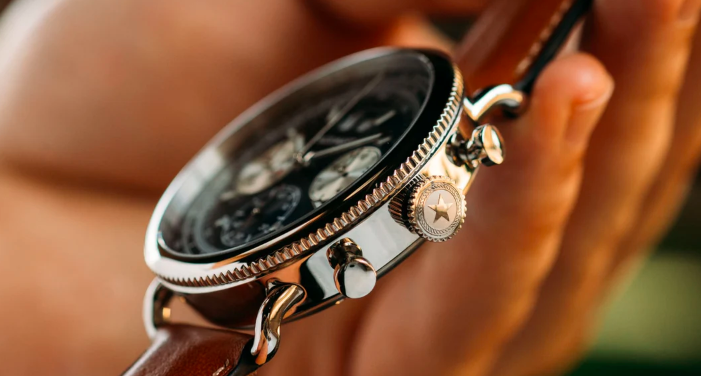Understanding the Watch Crown: Function, Types, and Maintenance

The watch crown is a crucial component of a timepiece, often serving multiple functions beyond its basic role. This article explores the role of the Watch crown the different types available, and tips for proper maintenance.
What is a Watch Crown?
The watch crown is a small, round knob typically located on the side of a watch case. It is used for various functions, including setting the time, adjusting the date, and winding the watch. The design and functionality of the crown can vary depending on the type of watch and its movement.
Functions of the Watch Crown
- Time Setting:
- The primary function of the watch crown is to set the time. By pulling the crown out to a specific position, you can rotate it to adjust the hands of the watch to the correct time.
- Date Adjustment:
- Many watches feature a date function, which can be adjusted using the crown. This function usually requires pulling the crown to a different position and turning it to set the date.
- Winding the Watch:
- In mechanical and automatic watches, the crown is used to wind the mainspring. For manual watches, this involves turning the crown to wind the watch and store energy. For automatic watches, regular wrist movement winds the watch, but the crown can be used if the watch has stopped.
- Changing Functions:
- On watches with additional complications, such as chronographs or dual time zones, the crown may be used to switch between different functions or settings.
Read also: How to Start a Watch Brand: Collaborating with a Watch Manufacturer
Types of Watch Crowns
- Push-Pull Crown:
- This is the most common type of crown, which can be pulled out to different positions to set the time or date. It is also pushed back in to secure it against the watch case.
- Screw-Down Crown:
- This crown screws into the watch case to ensure a watertight seal. It must be unscrewed before adjustments can be made. Screw-down crowns are often found on dive watches to enhance water resistance.
- Onion Crown:
- Characterized by its rounded, domed shape, the onion crown is often seen in vintage or luxury watches. It provides a distinctive aesthetic and is usually larger, making it easier to grip and operate.
- Twin-Pusher Crown:
- Found in chronograph watches, this crown is used in conjunction with two pushers to operate the chronograph function. It often features additional functions like starting, stopping, and resetting the chronograph.
Maintenance of the Watch Crown
- Regular Cleaning:
- To keep the crown functioning smoothly, clean it regularly with a soft cloth. This helps remove dirt and debris that can affect its operation.
- Avoiding Water Exposure:
- If your watch is not water-resistant, avoid exposing the crown to water. Even if the watch is water-resistant, ensure the crown is properly secured before exposing it to water.
- Proper Handling:
- Handle the crown gently to avoid damaging it or the movement inside the watch. Pulling or twisting it too forcefully can lead to mechanical issues.
- Professional Servicing:
- If the crown becomes difficult to operate or if you notice any issues with timekeeping, seek professional servicing. A watchmaker can inspect and repair the crown if necessary.
Conclusion
The watch crown is a small yet essential component of a timepiece, serving multiple functions such as setting the time, adjusting the date, and winding the watch. Understanding the different types of crowns and their functions can enhance your appreciation of the watch’s design and functionality. Regular maintenance and careful handling will ensure the crown operates smoothly and extends the life of your watch.




